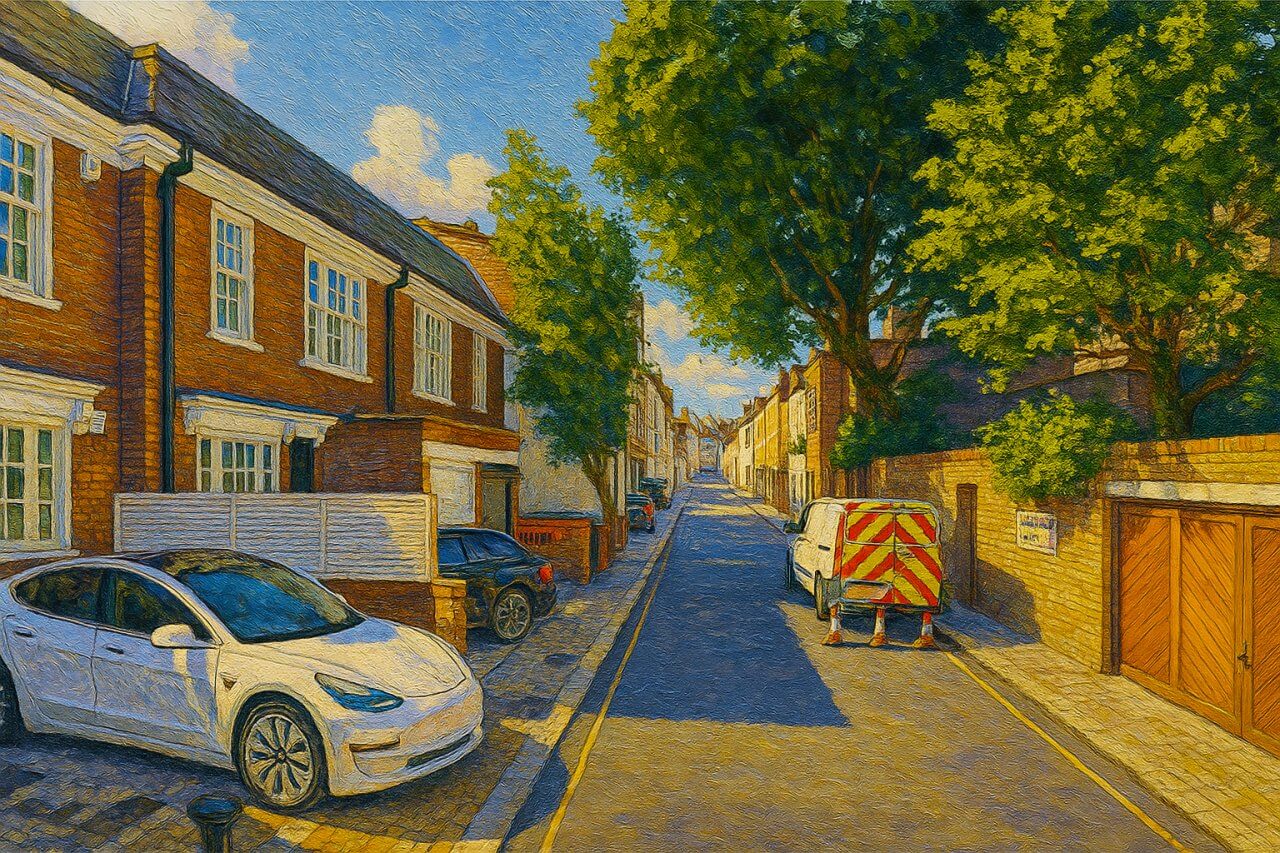
Cadogan Lane, London
Cadogan Lane is a tranquil and exclusive street in the distinguished district of Belgravia, London. Tucked away behind the grand façades of larger avenues, it quietly runs between Pont Street in the north and the junction of Cadogan Place and D’Oyley Street in the south. A small northern spur of the lane continues beyond Pont Street, ending in a cul-de-sac.
Overview and Route
The main section of Cadogan Lane runs in a gentle curve for approximately 350 metres (1,150 feet). It is a two-way street, although narrow in many places and better suited for local access rather than through traffic. The cul-de-sac north of Pont Street adds another 70 metres (230 feet) or so. The entire street is bordered by residences, private garages, and mews-style buildings, giving it a quiet, almost hidden feel compared to the grander thoroughfares of Belgravia.
History and Name
Cadogan Lane takes its name from the Cadogan family, one of London’s major aristocratic landowners. The family’s surname is pronounced Kuh-DOH-gun (/kəˈdɒɡən/  ). The Cadogan Estate has been managing this part of London since the 18th century, and many of the properties here were originally built in the 19th century as coach houses and mews dwellings for the grand homes on surrounding streets such as Cadogan Place and Pont Street.
). The Cadogan Estate has been managing this part of London since the 18th century, and many of the properties here were originally built in the 19th century as coach houses and mews dwellings for the grand homes on surrounding streets such as Cadogan Place and Pont Street.
Although not grand in architecture itself, the street has long played a functional and residential role, initially serving as service access to the more prestigious homes nearby. Over the decades, many buildings were rebuilt or refurbished as stylish residences, and today, Cadogan Lane is part of Belgravia's highly desirable real estate fabric.
Character and Ambience
Cadogan Lane retains a distinctly residential and secluded character. With a mix of modernised mews houses, private garages, and a handful of contemporary townhouses, the street offers an understated charm. It feels private and often quiet, especially compared to the busier roads nearby. The leafy surroundings, cobbled sections, and discreet entrances give the lane a tucked-away atmosphere much loved by residents seeking central London living with peace and privacy.
Nearby Attractions and Points of Interest
While Cadogan Lane itself is mostly residential, it benefits from proximity to a number of notable Belgravia and Chelsea landmarks:
- Cadogan Place Gardens – A large, private garden square just a short walk south.
- Sloane Street – Renowned for high-end shopping, just one block to the west.
- Harvey Nichols and Harrods – Prestigious department stores within 10–15 minutes’ walk.
- Saatchi Gallery – A contemporary art gallery located nearby at Duke of York Square.
- Sloane Square – A popular spot for cafés and shopping, located just to the south-west.
Real Estate and Property Values
Property on Cadogan Lane is among the most sought-after in central London. As of early 2025, homes here typically sell for between £3.5 million and £8 million, depending on size and finish. Rental values are also high, with smaller mews houses commanding upwards of £1,500 per week.
Houses tend to range from 1,500 to 3,000 square feet (140–280 sq metres), often featuring multiple floors, integrated garages, and refurbished interiors. These prices reflect the prestige of Belgravia and the proximity to Chelsea, Knightsbridge, and central London as a whole.
Transport Links
Nearest Underground Stations
- Sloane Square Station – About a 7-minute walk to the south-west. Served by the District and Circle lines.
- Knightsbridge Station – Around a 10-minute walk north-west via Sloane Street. Served by the Piccadilly Line.
Nearest Bus Stops
- Pont Street / Cadogan Lane – Serviced by routes including the 19, 22, and 452, with direct links to Piccadilly Circus, Hyde Park, and Hammersmith.
- Sloane Square – A major local bus hub offering additional connections around west and central London.
Fun Fact
Cadogan Lane made headlines in 1974 when it was the site of a notorious unsolved murder. Lord Lucan, accused of killing the family nanny, was last definitively seen at a house on this street before disappearing. His car was found abandoned in Newhaven the following day, and his fate remains one of the great mysteries of British true crime lore.
Quick Facts
- Location: Belgravia, City of Westminster
- Length: Approx. 350m main stretch, plus 70m cul-de-sac
- Connects: Pont Street (north) to Cadogan Place and D’Oyley Street (south)
- Traffic: Two-way; local access
- Underground: Sloane Square (District, Circle), Knightsbridge (Piccadilly)
- Bus stops: Nearby on Pont Street and Sloane Square
- Character: Quiet, residential, upmarket mews and houses
- Average property value (2025): £3.5M–£8M
- Nearby landmarks: Cadogan Place Gardens, Sloane Street, Saatchi Gallery
- Pronunciation: Kuh-DOH-gun (/kəˈdɒɡən/)
- Fun fact: Linked to the Lord Lucan mystery of 1974
Map of Cadogan Lane, London

Painting of Cadogan Lane, London (View image in full size)